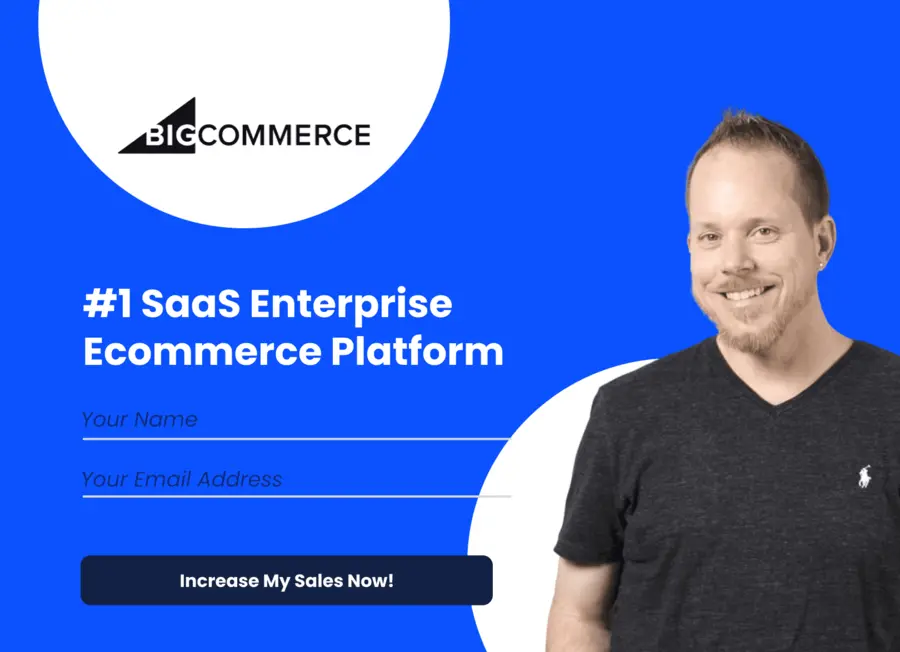I’ve already covered how to start selling online. However, once you’ve launched your ecommerce business, what’s next?
You want to set it up for success. And if Amazon is your go-to platform for online sales, it’s crucial to understand what makes or breaks it for a booming Amazon business.
Success on Amazon depends on sales and profit margins. Margins are controllable — you know your sourcing costs and set the pricing.
But sales aren’t that straightforward.
For sustainable sales, you need a steady flow of visitors to your Amazon product listing. This goal means you need to optimize your listing for maximum traffic.
Key questions for Amazon listing optimization:
- Where does the traffic on Amazon come from?
- How do you optimize your Amazon product listing to attract the most visitors possible?
This post will answer these questions and guide you in building a product listing optimized for success on Amazon.
Where Does Amazon Traffic Come From?
Amazon itself has billions of monthly visitors. In 2023 alone, it reported over 2 billion people browsing its website monthly.
The marketplace’s internal audience can be a great source of traffic for your Amazon listing. By optimizing your Amazon product listing and utilizing Amazon SEO strategies, you can attract more visitors from within its own ecosystem.
Then, there’s external traffic — from showing up high on Google search results, you bring the audience to your listings by having referral links from other sites. You can leverage the global audience from anywhere outside of Amazon by optimizing for keywords and building quality backlinks.
To achieve the highest number of visitors possible, you must tackle both Amazon’s internal traffic and traffic from other platforms. Effective keyword research for Amazon, optimizing Amazon product titles, and creating engaging Amazon product descriptions are crucial steps.
How to Drive Amazon’s Internal Traffic to Your Listing
Amazon is a search engine where shoppers can find the best and most relevant product for their query. To achieve success, understanding Amazon listing optimization is crucial.
Like any search engine, Amazon has a ranking algorithm called A9, which helps rank product listings (each product has its ASIN Number) in a particular order.
To get as much traffic as possible from Amazon, optimize your product page to rank as high as possible. Why? Because users typically click on the first few links on the first page of search results.
While you can manage factors like price and stock inventory by yourself, using an efficient keyword tool is essential for optimizing your listing's relevancy indicators.
This approach allows you to leverage the three most important ranking factors on Amazon:
- Keyword relevance: Ensure optimization of your Amazon product titles, bullet points, and product descriptions with the right keywords.
- Conversion rate: Create compelling content and high-quality images to convert visitors into buyers.
- Sales velocity: Maintain steady sales to improve your rankings.
By focusing on these factors and utilizing effective Amazon SEO strategies, you can significantly improve your Amazon listing's performance.
1. Optimize Your Listing for the Right Keywords
Now, the first thing you should do to build a well-optimized product listing is to know your target search terms. Semrush’s Ecommerce Booster tool can help you find all the intel you need to pick the right terms.
Discover Your Target Keywords
The product you sell will typically be the first thing you should explore as a keyword. But don’t simply use that particular word as your target term, as you might be able to have more success with a similar search.
For instance, if you are selling a product for hair coloring, you might want to use “hair color” as your target keyword.

In a similar manner, you can come up with a list of related keywords that you should also add throughout your listing’s content — to target more searches.
So your job is to look up all the surrounding terms around your main keyword and go smart about it. How? You should focus on the right metrics:
- Search volume (shows monthly searches for a given keyword): the higher it is, the better.
- Relevance (reflects how close that search is to the original keyword): the higher, the better.
- Competitors (indicates how many listings you are competing against if you choose to optimize for a given keyword): the lower, the better.
Optimize Your Product Listing for Selected Keywords
Your product listing is full of space where you can integrate your keywords. And you shouldn’t miss out on any of them:
Product title is where adding your main keyword is an absolute must. Make sure to use your target term in the first few words, and keep your title as neat yet informative as possible.

Product description should also feature your main keywords, as well as a few other search terms as you have more space for keyword placement. But once again, keep your description neat and don’t overstuff it leading to a bad user experience as this is where conversions happen, so a user-first approach is always a must.
Your bullets typically recite your product’s main features. But you can also be smart about your text here and place a few keywords here and there.
One underrated placement spot is your Q&A section. When answering customers’ questions, make sure to add your keywords throughout your response.
2. Optimize Your Amazon Product Listing Images
Both Amazon and shoppers care about the visual quality of your listing. So, if you optimize your images right, you are killing two birds with one stone — you improve your rankings and conversions.
Having high-quality images is something that goes without saying. But here’s what that means exactly:
- Use a clean white background for your very first product image—this is a common best practice so you should absolutely follow it.
- For engagement purposes, you can add one or two lifestyle images that show the application of your product or simply place it in a nice environment, but don’t overuse this trick as that’s not what people have come to your listing for.
- Don’t use accessories you aren’t selling—this might confuse the visitors into thinking that that side product goes with your main product.
- Make sure your images are large enough (at least 500×100 pixels) to make use of the zoom feature.
3. Don’t Break Any Amazon Listing Rules
Amazon can be pretty strict, especially regarding its Review Policy, which includes all the guidelines and requirements concerning your Amazon product listing.
So, you waste even your best Amazon listing optimization efforts if Amazon decides to suspend your listing for not meeting its quality standards.
This probability where you need a thorough listing audit that will highlight any potential problems.
Tools like Amazon Listing Quality Checker will ensure your listing meets all Amazon requirements and style guides. But on top of a simple audit, you’ll also get a list of ideas and recommendations for finessing your listing’s quality.

4. Refine Your Product Listing Elements for Top Performance
Now that you’ve ensured all your Amazon listing components are well-optimized, it's time to start testing.
Split testing, A/B testing, or multivariate testing of your product listing is crucial to understanding how each element impacts your Amazon product listing performance.
Successful businesses use data, continuously testing and gathering information to shape essential decisions.Even negative reviews can be helpful if you handle them wisely.
What is Split Testing or A/B Testing?
Split testing, or A/B testing, is a way to conduct experiments and see which variables produce the best results. It involves creating two versions of a listing (A and B), changing only one variable while keeping everything else the same.
After a set period (generally at least two weeks), you compare the results to determine which variable performed better.
Similarly, you can test combinations of different variations of your product listing elements using multivariate testing.
The Benefit of A/B Testing
In any marketing campaign or product listing, numerous variables can impact success — sales, conversion rate, etc.
Without data, decisions are merely guesswork. Split testing provides actual data, enabling you to make informed decisions about what works and what doesn't.
For example, you might discover that one product image results in more clicks or that a specific benefit in your bullet points increases your conversion rate.
How to Do Split Testing (Amazon A/B Testing Process)
To perform split testing on Amazon, create a controlled environment where the only difference between A and B versions is the variable you want to test. This method ensures any difference in results attributed to the changed variable.
Use Amazon Seller Central to conduct your A/B tests:
- Go to the reports dropdown in your Seller Central account.
- Choose business reports.
- Click detail page sales and traffic by child item.

This report provides metrics such as Sessions, Buy Box Percentage, Units Ordered, Product Sales, and Unit Session Percentage, all necessary for measuring the success of your tests.
Generate reports for the date range of your test and analyze the data to determine the winning version.
What Can Amazon Sellers Split Test?
Amazon sellers can test various elements to optimize their listings:
- Title: Test different titles to see which attracts more clicks and conversions.
- Images: Rotate different main images every two weeks and observe the results. Use photo editing tools like Photoleap or Pixlr to edit your product images professionally for better results.
- Price: Experiment with different price points to find the optimal price that maximizes revenue.
- Bullet points: Test different ways of writing your bullet points, such as long vs. short copy or emphasizing different benefits.
- Product description/A+ Content: Test different descriptions or A+ Content variations to see which performs better.
How Long to Run Split Tests
There is no fixed time frame for running split tests, but a general rule of thumb is to test for at least two weeks.
The duration can vary based on the number of traffic and sales your product receives. Faster-moving products can be tested over shorter periods, while slower-moving products may require more tests to obtain statistically significant results.
How to Bring Traffic From Outside Amazon
All the steps should help you enhance your rankings within Amazon—to get as much traffic as you can from its internal audience.
But which platform has even more monthly users than the top ecommerce? Right, it’s Google. And there are a few ways to get organic traffic coming in from Google — to get people to visit your listing from organic search and through referral links.
These two strategies can bring you the largest external traffic shares without enticing you to spend on advertising or paid partnerships.
Let’s see what you can do to nail an organic Google search and get mentions with links on other sites.
Explore Whether You Should Invest in External Traffic Sources
If improving your Amazon rankings is essential, considering external traffic channels can be a valuable strategy. Investing in external traffic means using additional platforms to drive visitors to your Amazon product listing, increasing your visibility and potential sales.
A tool like Semrush's Ecommerce Keyword Analytics can help you assess external traffic sources for any product you wish to sell. This tool lets you identify the top traffic sources for your product and understand where your competitors are getting their traffic.

For example, if you search for “tennis balls” using this tool, you might find that the top online retailer is Amazon, followed by other retailers like Costco.
By analyzing this data, you can determine whether external traffic sources are worth investing in for your product.
If your competitors have significant traffic from platforms outside of Amazon, it indicates a potential opportunity for you to also tap into these sources. Conversely, if there's minimal traffic from external sources, you should consider other strategies.
Leveraging external traffic sources can complement your Amazon listing optimization efforts, helping you attract a broader audience and enhance your overall sales performance.
Target Traffic From Google Organic Search Results
As with everything Google, great SEO is the defining factor for getting high rankings on organic search results pages.
Yet since you aren’t running your own site, you have limited SEO capabilities. Amazon itself, however, already provides you with high site authority and few technical errors, which means that you can focus on keywords and expect a great outcome.
Now, this is how you can optimize your listing for higher Google rankings.
Just as with Amazon, your very first job is to define the key search terms you have to optimize your listing for. You can use Semrush’s Ecommerce Booster for this.

With a sneak-peek into competitors’ keyword strategies, you can unveil keywords with the highest potential — simply explore the list of keywords they rank for on Google and choose the most promising terms based on the following metrics:
- Search volume: How many people search for this word/phrase every month
- Competitors: How many listings are competing for ranking for that keyword
- Traffic: An estimate of how many visitors come to the product listing from Google organic search results
To unwrap the hidden gems (if you’re using Traffic Insights), you can play around with filters to come up with a few keywords that have the top search volume and traffic counts, along with the lowest number of competitors.
And then, you have to repeat the cycle of integrating these keywords throughout your product listing.
Drive Referral Traffic to Your Product Listing Through Link Building
If you want to get referral traffic — it comes as the second most impactful traffic source after Amazon itself — you need to find websites that will link back to your Amazon product listing, essentially acting as link-building partners.
Instead of manually searching and potentially missing out on many opportunities, you can use a link building tool like Traffic Insights. This tool will identify all the sites from which your competitors have backlinks.
By leveraging these insights, you can effectively build a strong referral link network that drives external traffic to your optimized Amazon listing.

Above, you can see a list of all the websites that have a referral link to the analyzed listing.
Of course, you can’t possibly reach out to all of these partners asking for a referral. Instead, use the following metrics to narrow down the scope:
- Check out their potential reach to see the maximum number of people who might visit your site through the backlink. The higher the number, the better.
- Choose sites with a higher Authority Score — backlinks from sites that have a high score will also help boost your Google search rankings as Google considers the quality of your backlinks when defining your position in search results.
- The competition will help you see how many Amazon products get a backlink from a given site. In this case, a high count might indicate that this site is friendly to Amazon sellers so don’t disregard it because of high competition.
Once you have a list of sites you can realistically reach out to — just do it!
Ready to Build a Success-Proof Amazon Listing?
Now, you have everything you need to build a top-performing Amazon listing that attracts traffic from within and outside Amazon. By focusing on Amazon listing optimization and effective Amazon SEO strategies, you can drive significant organic traffic to your product.
You can even use an Amazon review checker to gauge your shop’s sentiment.
This post emphasizes organic strategies to optimize your product listings because, as a new Amazon seller, it's best to prioritize organic methods before leveraging paid channels and other opportunities.
Start with keyword research for Amazon, optimizing product titles, and creating compelling product descriptions. Once you have a solid foundation, refine your product listing with advanced optimization strategies, Amazon seller tools, and external traffic sources to boost performance.
Remember, maintaining PCI compliance is crucial when handling customer payment information to ensure data security and build trust.Optimize your product listing on Amazon for higher visibility and conversions to grow your ecommerce business.




Related Articles
11 Best Ecommerce Platforms to Set Up an Online Store
Top B2B Ecommerce Platforms for 2025
How to Build an Ecommerce Website in 9 Easy Steps
11 Best Ecommerce Platforms for Small Businesses in 2025
The World’s Top Ecommerce Companies (2025 List)
25 Best Ecommerce Tools to Grow Your Business in 2025